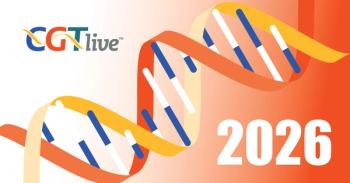
David Rawlings, MD, on the Potential of Engineered Treg Cells to Treat Autoimmune Diseases
The director of the Center for Immunity and Immunotherapies at Seattle Children's Research Institute discussed preclinical research on overcoming limitations of Treg cells through genetic engineering.
“Putting this all together: The concept of therapy with regulatory T-cells is that if you can target them to the autoimmune tissue of interest—for example, the islet in type 1 diabetes, where the autoimmune process is taking place—then you can have a tissue-specific therapeutic that that turns off an autoimmune process.”
T-regulatory (Treg) cells have the natural ability to dampen immune responses, and as such are of great interest for potential use in the treatment of autoimmune diseases. Although, a number of factors makes the utilization of unmodified Treg cells unlikely to be effective as the basis of a cell therapy. For example, Treg cells require the presence of interleukin-2 (IL-2) in order to remain active and polyclonal Treg cells have limited efficacy.
In an attempt to overcome challenges like this, investigators in the lab of David Rawlings, MD, the director of the Center for Immunity and Immunotherapies at Seattle Children's Research Institute, have been conducting preclinical research on the development of antigen-specific engineered regulatory T-cells (EngTregs). These EngTregs are derived from autologous CD4 T-cells and are genetically modified to maintain the Treg cell phenotype continuously and to target a specific antigen. A third modification allows the EngTregs to be activated by the presence of rapamycin rather than IL2. This is important because administration of sufficient levels of rapamycin for the purpose of activating the EngTregs avoids common issues with using exogenous IL2, such as activation of other, unintended cell types. These results from their work were presented at
In an interview with CGTLive™ shortly after the conference, Rawlings discussed the engineering techniques his lab has been researching and how they might help to overcome the issues holding back the therapeutic potential of Treg cells. He also went over the results of further research that involved administering EngTregs in a mouse model of diabetes. He noted that a mouse surrogate of the EngTregs targeted at mouse pancreatic islet cells showed the ability to prevent the development of diabetes in vivo.
REFERENCE
Seattle Children’s Researchers Share Progress at American Society of Gene and Cell Therapy Annual Meeting. Website. Seattle Children’s Research Institute. Accessed October 12, 2023. https://www.seattlechildrens.org/research/featured-research/asgct-2023/
Newsletter
Stay at the forefront of cutting-edge science with CGT—your direct line to expert insights, breakthrough data, and real-time coverage of the latest advancements in cell and gene therapy.






























